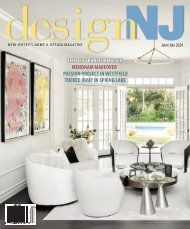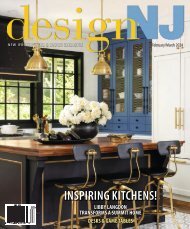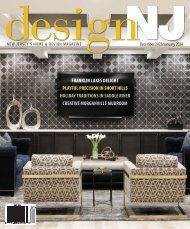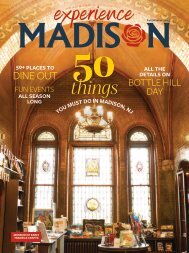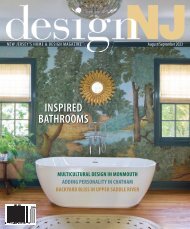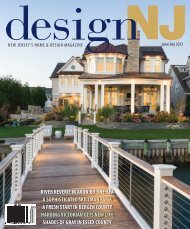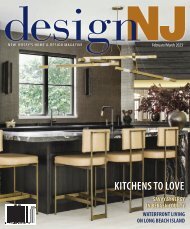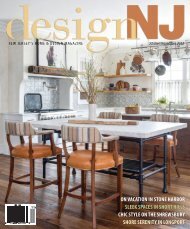Create successful ePaper yourself
Turn your PDF publications into a flip-book with our unique Google optimized e-Paper software.
in the next several years,” says Cleveland
Johnson, executive director of the Morris
Museum. “Will their support be diverted
to other things? Are they going to recognize
that arts and culture still need that
support? Will it be seen as a priority?”
Most of the Smithsonian-affiliated museum’s
income comes from foundations,
corporations and individual donors. This
year, some supporters expedited delivery
of funds and have been willing to consider
reallocation of project-specific funding
for operating expenses.
This spring, it was the Morris Museum’s
turn to host the juried New Jersey Arts
Annual. Instead, that exhibit was rolled out
online, with information and multimedia
content about the artists and their work
shared daily on social media. When the
museum opens again, “we will reset the
clock,” says Johnson. That exhibit and others
will stay open for three or four months.
The Montclair Art Museum is in a
similar situation. MAM’s spring exhibitions,
which opened in February, will be
extended to the fall.
Shifting dates is relatively easy. Making
cuts to staff and expenses is not.
“We had to cut as much as possible,
which was extremely painful, to make
sure there was a museum on the other
end of this,” says MAM director Lora Urbanelli.
That meant temporarily reducing
regular employee headcount from 52 to
22. Those who remained are on part-time
hours, including Urbanelli. Even with the
building closed, expenses remain, including
HVAC (the artwork must be kept at a
certain temperature) and insurance.
MAM has also shifted to virtual offerings.
“I think that’s going to serve us well,
even when we get back in gear in a more
normal way,” says Urbanelli.
Among MAM’s digital initiatives is
the Jersey Artist Marketplace, a multiple-pronged
fundraiser for artists, the
museum, and to-be-announced partner
agencies. All proceeds will be shared: 50
percent to the artist, 40 percent to the
museum, and 10 percent to partners. “It’s
great for the artists who really have seen
a drop in their ability to stay visible and
sell their work,” says Urbanelli.
Independent artists have been hit hard
by the shutdown of galleries, which are
sometimes their only path to exposure.
Molly Sanger Carpenter, a mixedmedia
artist based in Mannington
Township, was counting on exposure and
money from her May solo show at SOMA
NewArt Gallery in Cape May. Instead,
the exhibit was presented virtually, with
curbside pickup of purchased works.
“As an artist, sure, you do it for money,”
she says, “but you also do it because
there’s something about getting your
work out there in front of people and
making your statement.”
Carpenter also does secretarial work
for her husband’s landscaping business.
Thanks to income from that hustle and
an upcoming commission for the Joint
Health and Sciences Center in Camden,
Carpenter has not had to apply for loans
set up for artists. “I know there are artists
2020 Season
OUR 2020 SEASON
WILL BE COMING SOON!
It’s June, and while we’re still on the long
COVID-19 “intermission,” we’re hoping that we
can soon bring you the much-needed medicine
that great theatre can supply! We especially hope
we can open our Outdoor Stage production of
Much Ado About Nothing for your viewing pleasure
in July when, hopefully, seeing a show under the
stars will be a welcome opportunity to gather safely
and without concern!
Call our Box Office or check our website and social
media for daily updates and more information on
when our doors will open again.
We miss you!
Pictured: the set of A Midsummer Night’s Dream, 2007. Photo by: Andrew Murad.
973-408-5600
SHAKESPEARENJ.ORG
JUNE 2020 NEW JERSEY MONTHLY 33



